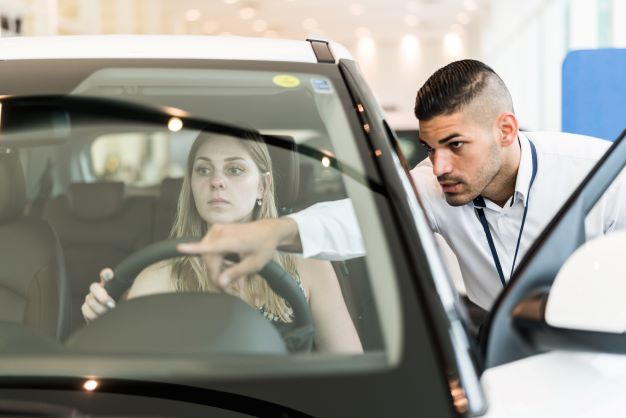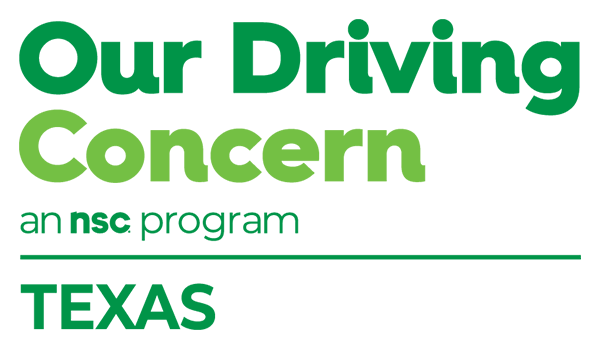Safety Coach
Ready for Any Situation
In school buildings and at many other workplaces, the term “situational awareness” is applied regularly to environmental health and safety procedures. You’re better equipped to mitigate risk when you recognize and understand potential hazards, right?
Let’s look at how you can apply situational awareness concepts to improve driver and transportation safety training efforts at your location, whether your employees commute to work or operate fleet vehicles every day. Talk to your workers about being aware of everything going on inside and outside their vehicles, and develop your own method to measure safety progress over time. Your driver safety scores will climb as you help everyone develop safer driving habits.
Here are some areas to focus on; share these tips in your own newsletter or via the intranet:
Blind Spots
Frequently check your rear-view mirror for vehicles approaching from behind. Use your side mirrors to view the rear-left and rear-right sides of your vehicle, and quickly turn your head using peripheral vision to check for vehicles approaching on either side.
- Keep windows clean and clear of obstruction that can interfere with sight lines
- Do not linger in another driver’s blind spot
- Keep a safe distance between your vehicle and other traffic
Pedestrians
Drive distraction-free and look out for pedestrians at all times. There is more foot traffic during the school year early in the morning and from 3 to 6 p.m., and more buses are on the road.
- Yield to pedestrians in crosswalks
- Slow down in congested areas and in school zones or neighborhoods where children are playing
- Avoid prescription drugs and over-the-counter medications that can slow reaction time and cloud judgment
Free materials: Get pedestrian safety posters and teaching tools, and challenge your team with a quiz to test their pedestrian safety knowledge.
Road conditions
Plan ahead. In bad weather, short trips can take double the time. The drive can be stressful, too.
- Be sure your wipers, headlights and taillights are in working order
- Look ahead, look around, leave room and use your blinkers to communicate movement with other drivers
- Slow down on wet and slippery roads
Know Safety, No Crashes (read/share): Consider this a Call for Safety.
Emergency Vehicles
When you hear a siren or see flashing lights, be sure you know what to do:
- Slow down and move to the right when it’s safe to do so
- Never stop in the intersection; safely drive through the intersection and then pull to the side of the road
- Never take photos or videos at crash scenes while driving; this is often how one crash becomes a chain-reaction event
Use this free handout to lead a brief safety talk: Know What to Do When Sharing the Road with Emergency Vehicles.
Vehicle Maintenance
Prevent breakdowns by sticking to a maintenance schedule at work or keeping your personal vehicle serviced according to manufacturer’s recommendations.
- Create a checklist for tune-ups, oil changes, tire rotations and battery checkups
- Use tools here to check fleet vehicles and personal vehicles for recall notices; get free repairs made by the dealer
- Keep a cellphone charger, tire jack, jumper cables and first-aid kit in your vehicle
Send this blog to your team in an e-blast: Before You Hit the Road, Check for Recalls.
Far-Hand Reach
Introduce the “far-hand reach,” a simple safety technique that can stop you from opening your door in front of an oncoming vehicle, bicyclist or pedestrian. Try it the next time you’re parked on the street:
- When exiting your car, reach for the door handle with your far hand
- This will force your head to move, alter your line of sight and provide a glimpse into your side mirror
- Look for bicyclists and pedestrians before pushing the door open
Watch/share this video: Bicycle Safety and the Far-Hand Reach
Scanning mirrors to create situational driving awareness is like the scanning steps taught to airline pilots or football quarterbacks. When you know who – or what – is in your field of vision, you can plan accordingly to beat the defense or execute a safe takeoff. Let’s apply the same situational awareness principles to traffic safety.

Tailgate Talk
Traffic Safety To Go
Some of your employees travel often. Others travel rarely. Help them all stay safe in unfamiliar vehicles and on unfamiliar roads. Print this free rental car-safety checklist, with instructions for wallet-card assembly. Provide your team with these rental safety tips:
- Before departing, adjust your seat, front and side mirrors
- Be sure the emergency brake is disengaged
- Learn how to turn on the headlights and wipers
- Locate the most commonly used dashboard features; pick a radio station, set the heat or air conditioning controls
- Find the port, connect your phone and activate GPS guidance to avoid the distraction of fidgeting with the touchscreen while on the road
Use this free Co-Pilot Rights infographic to guide employees traveling together. The passenger in a rental can be that all-important second set of eyes. As co-pilot, they can make calls, send texts, and watch for signs, landmarks and traffic problems, such as backups in congested areas.
Rental car safety is just as important to include in your driver safety program as other traffic safety initiatives. The goal is to prevent crashes and reduce liability exposure.

